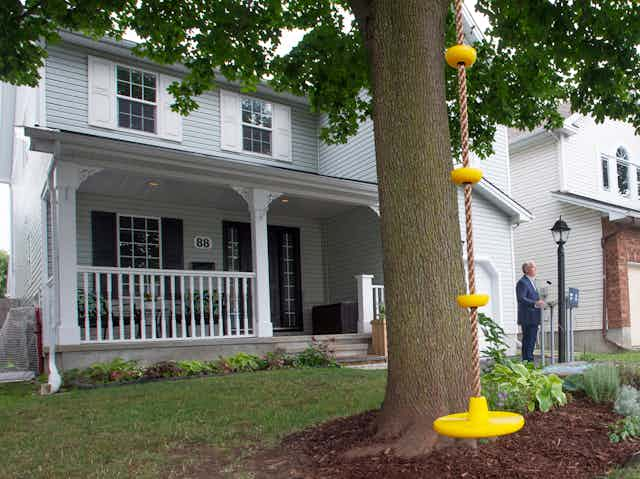Housing affordability is one of the top federal election concerns. However, there is no clear solution to fix the current complex housing crisis in Canada.
The Liberal party is hoping to build on their National Housing Strategy by incentivizing developers to construct rental properties. The Conservatives are also advocating for increasing the housing supply, yet the image accompanying their housing proposals is of a suburban neighbourhood full of single-family dwellings. This is currently the most unaffordable form of housing.
The NDP has the most ambitious plan, promising to build 250,000 affordable rental units in the next five years. The parties all suggest solving the housing affordability crisis by increasing supply, especially rental and regulating foreign investment, but most importantly they focus on making it easier for people to buy a home.
Election promises of more affordable housing are effective because they tap into the narrative of the good life. Housing is central to the-rags-to riches trope because home ownership is scripted as central to a successful and full life.
A settlement strategy
Since the 18th century, governments have used the dream of home ownership as a settlement strategy, a tool to decide who should live where. In Canada, land was advertised as “open and empty,” immigrants left their home countries to fulfil their dream to own land and build a new life.
The settler dream of home ownership rests on stolen Indigenous land — a fact most Canadians would prefer not to acknowledge. Home ownership became a symbol that the land “no longer belonged” to Indigenous people. And houses dotting the landscape became proof that settlers were a permanent fixture.
As a society, we have largely accepted home ownership as a guiding narrative because shelter is essential. However, the foundation of this national dream rests on the theft, deception and destruction of Indigenous communities.

Home ownership formed the creation of a landed class, as those with financial means could get access to stable and secure housing and those without were left scrambling or were pushed to the margins. The lack of a stable and secure home was seen as the failure of the individual. Affordable housing is not viewed as a human right that should be protected by government.
National dream of home ownership
Over the last century, housing affordability has reached several crisis points. During the Great Depression, the dream of home ownership began to falter. Rather than investing in an affordable rental market to ensure stable and secure housing, the federal government encouraged home ownership by regulating mortgages.
Those with financial means were able to secure adequate shelter. Those without resources were often, literally, left out in the cold. This perpetuated the earlier settlement narrative that only home ownership would ensure stable and secure housing.
The housing crisis reemerged again after the Second World War when it became increasingly apparent that there was a lack of housing for low-income families and returning veterans who were promised homes. The national dream of home ownership was re-animated in the post-war period to encourage suburban development, which catered to middle-class families. Low-income families were left to scramble for the token public housing developments or continued to live in inadequate dwellings.
However, sub-urbanization and the few public housing units built in the 1950s to early 1960s did not solve Canada’s housing crisis. In 1968, former member of parliament Paul Hellyer’s task force on housing travelled across Canada collecting data on low-income families facing inadequate housing. Rather than improving public housing, former prime minister Pierre Trudeau subsidized home ownership.

Federal subsidies have shown to be ineffective
With mortgage rates skyrocketing during the early 1980s recession, the federal government once again intervened to reduce mortgage rates in hopes of ensuring people could afford to buy.
A similar government intervention occurred after the 2008 stock market crash. The federal government defaulted to encouraging home ownership rather than exploring subsidizing and constructing a range of housing options that would ensure all citizens have adequate shelter to meet their individual needs.
Read more: Canada's housing crisis needs answers — but first we need to ask the right questions
Federal subsidies supporting home ownership have shown to be an ineffective strategy to ensure housing is safe, stable and affordable for all members of society. Each time the federal government has subsidized home ownership, access to stable and secure shelter becomes more difficult for a larger number of citizens.
As a society we need to examine our symbols and values attached to housing. The dream of home ownership has been a tool of dispossession and exclusion and has perpetuated the commodification of housing.
We don’t need federal subsidies to buy a home. A new national narrative needs to emerge that provides access to safe, secure and affordable housing to all, regardless of income.

